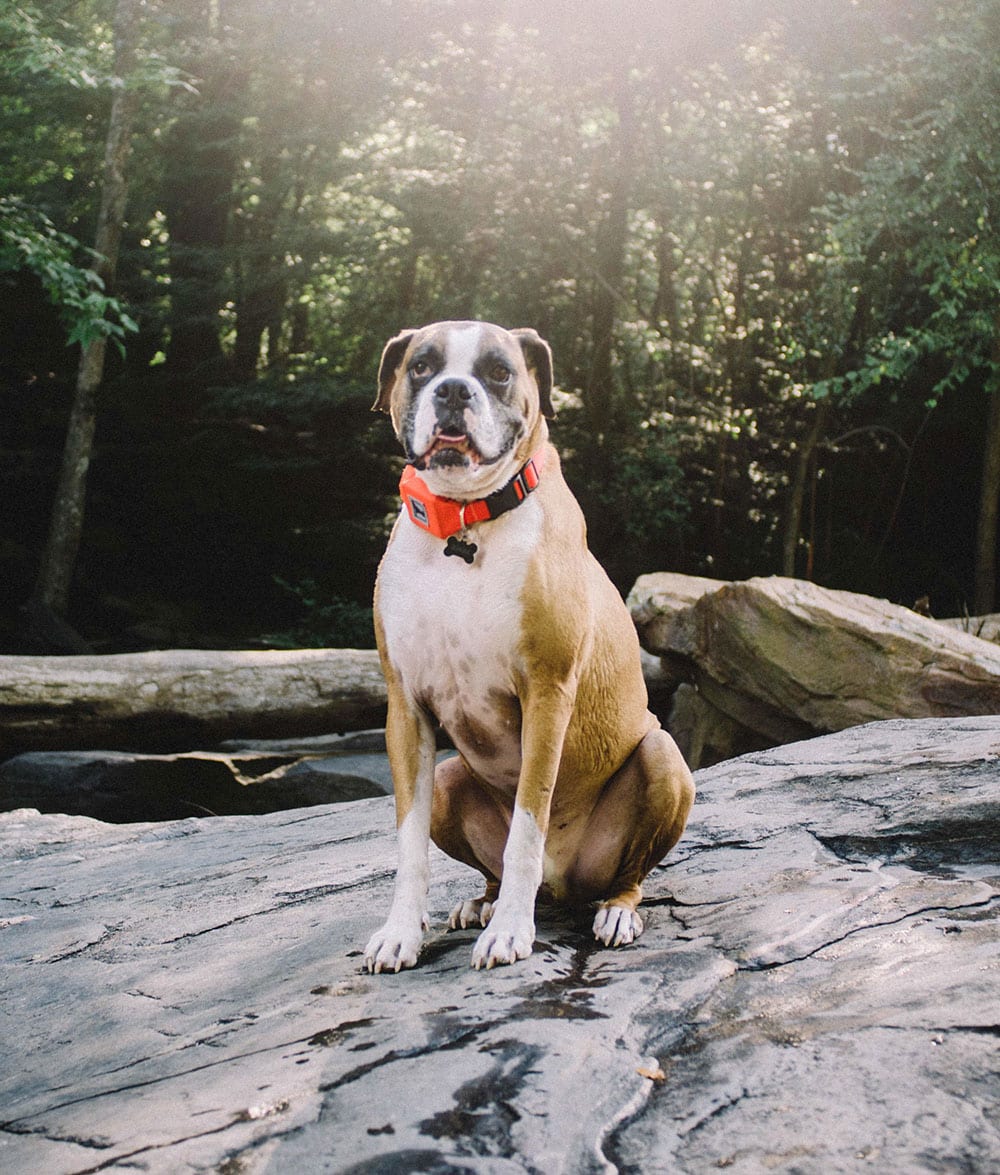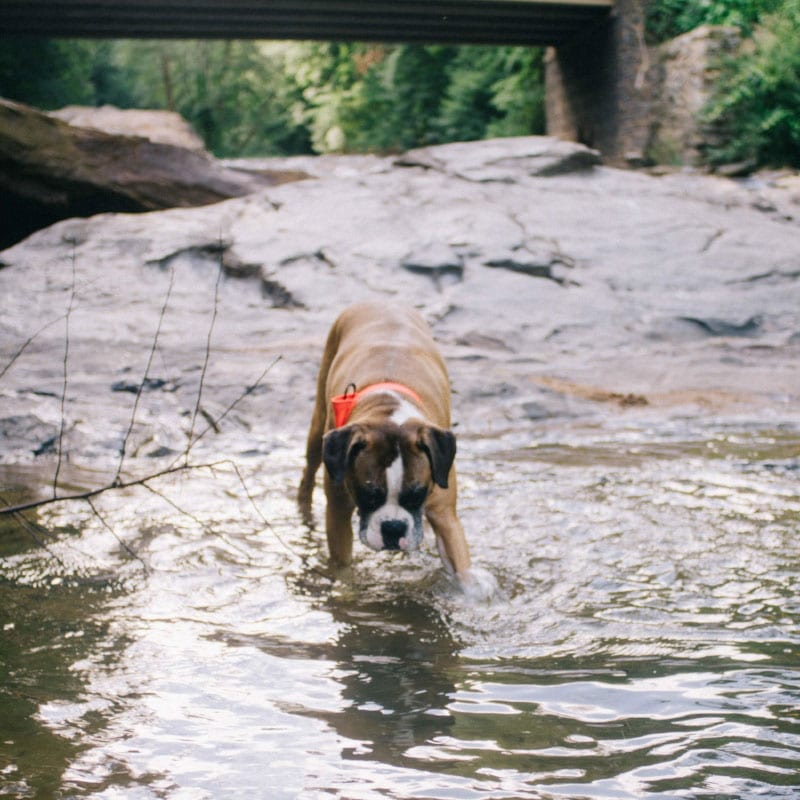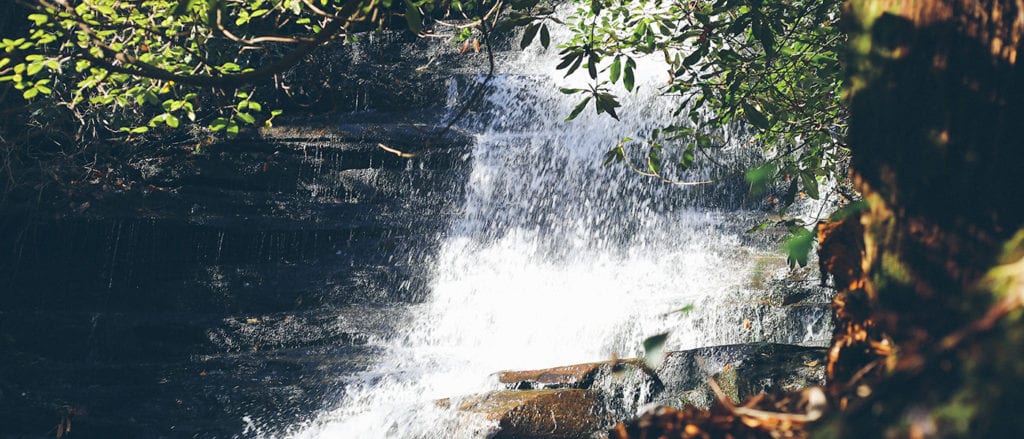
words and photos by
Cherisa Hawkins
I am just another woman on a mountain with my camera. However, I’m seen as one of a kind in this day and age. I’m a woman, I’m a hiker and I’m a person of color and I am on a journey to explore this beautiful planet we call home, and diversify the community of hiking, camping, and outdoor living.
One of the best parts of being outdoors for me is sharing that moment with my dog. But part of my responsibility of being a good owner and a decent fellow hiker is knowing how respect my fellow hikers & to control my pet on the trail.
 Just this month I was invited to a backpacking trip to take place later this summer. There was a special request from my amazing friends (@latinxhikers) to bring Rocko, who they’ve never met. Once I had researched the trail and determined it was a suitable hike for him I responded with “Yeah! Of course.” It was then that realized I can feel confident taking my dog on longer backpacking trips thanks to the following tips I follow:
Just this month I was invited to a backpacking trip to take place later this summer. There was a special request from my amazing friends (@latinxhikers) to bring Rocko, who they’ve never met. Once I had researched the trail and determined it was a suitable hike for him I responded with “Yeah! Of course.” It was then that realized I can feel confident taking my dog on longer backpacking trips thanks to the following tips I follow:
1. Are dogs allowed on the trail?
Research the trail and campsites you plan to visit. How strenuous is the hike? Will there be any climbing? Are there any deep or fast-moving water crossings that your pet cannot handle? Unfortunately, not all hiking trails and campsites are suited for pets or allow dogs. Although I have yet to encounter any that outright ban pets, it’s my first priority to check the trail information before we head out. Typically backpacking in the backcountry means sleeping along the trail so usually if dogs are welcomed on the path you are good to go. I’ve used the site hikewithyourdog.com to find the best trails in my area.
 2. Clean up after your dog!
2. Clean up after your dog!
One key thing to remember for ALL OWNERS is to make sure you clean up after your dog while you are out. No matter where you venture, be sure to pack plenty of bags to pick up their waste. It’s easy to think “Oh, we’re out in nature what’s the big deal?” The big deal is that you and your pet are contributing to fecal bacteria in nearby waterways or in underground water sources. You would have an issue if you threw a party and had 100 guests come over and leave 100 poops in your toilet without flushing right? Gross. Right?! Exactly. And be sure to not only bag your pets poop but throw the bag in the trash cans provided at the trailhead. It’s really sad I have to mention that fact, but all to often do I see full poop backs along the trail because the owner didn’t feel like carrying the poop out. My friendly suggestion, if you’re that bothered by carrying poop A) don’t take your dog hiking or B) try to get your dog to go #2 when you first arrive at the trail head so you can clean it up and throw it away without having to carry it all day.
 3. Follow leash laws.
3. Follow leash laws.
Rocko thoroughly enjoys being on the trail, and as his owner, I take comfort in the fact that I’m giving him the best possible life. However, part of the fun of taking him on the trail comes with the responsibility of keeping him safe. While hiking the back-country, I will occasionally allow him to walk off leash if the rules of the trail permit it. It is critical to mention that you should be 100% sure your dog has strong recall training whenever they are off their lead. Unleashed dogs are more vulnerable to injury or dangerous situations like consuming poisonous plants or chasing after a mother bear protecting her cubs. Part of what determines if Rocko will be allowed to walk off leash is based on the information I find in point #1.
This rule also applies to when you are lounging around camp. I remember my first group camping trip with Rocko. I had him on-leash all day because it was his first time in the woods and I wanted to keep him close. Foolishly, later that night I took him off his leash while he laid at my feet near the fire. Suddenly Rocko took off into the woods in a flash scaring the absolute crap out of me. It was his first time in the woods, and I had lost him in the dark. Luckily we had been training his recall, and after two desperate calls of his name into the darkness, he came trotting right back happy as could be. I was lucky that he was chasing off the raccoon who had stolen his bowl earlier in the day and NOT a cub or larger predator.
 4. Get in tune with your dog’s body language.
4. Get in tune with your dog’s body language.
Since his little incident, I’m learning to master reading his body language by continually keeping an eye on him around camp. He is still allowed off-leash but only during the day and while he’s free, I’m always monitoring his body language. Is the hair on the ridge of his back standing up? Is his tail tucked or his ears back? Is he searching for a sound or staring off into the woods instead of engaging with us in camp? If any of those answers are yes, then back on the leash he goes. Your dog can sense, hear and smell better than you, so it’s your job always to make sure they are safe. You may not be aware of that deer standing in the brush a few hundred feet from camp, but I can almost guarantee your dog will.
 5. Learn important commands.
5. Learn important commands.
Wait, stay, heel, come, leave it. Depending on your pet and the type of hikes you do your commands may vary slightly but it’s essential to have a clear understanding of basic commands before your trip. Rocko’s keywords are, stay, come & wait.
WAIT
- I’ve tried heel, but he has never responded consistently and answers better to “wait.” I typically use this word when we are walking down steep or sketchy terrain. I prefer to navigate down the path first and will want him to wait at the top (wait with stay) until I have reached a certain point or will want him to walk at a slower pace behind me.
STAY
- This one is simple, I want you to put your butt down on the ground and remain there until I release you. Rocko is a pretty mellow guy, so this command was reasonably easy to teach him. Though I will add the caveat that he may break his command if he feels anxious about his surroundings. For example, he’s not an experienced swimmer. I know that I may not get him to confidently hold a stay if he’s sitting alone on a rock in the middle of a creek, compared to him keeping on a ridge somewhere so I can take his picture. Have realistic expectations for your pet and know what makes them uncomfortable.
 COME
COME
- Come when called is one of the most critical skills for your dog to have on lock because it can keep her safe in potentially dangerous situations. This command comes with a little training for both the owner and pet. For the owner, you always have to make sure you are making the command a game. It’s easy to freak out when you see your dog approaching a precarious situation. Be sure to stay relaxed and make yourself more interested than what’s ahead. This may involve you jumping up and down, and clapping like a bozo but if it works, do it! Once your dog learns that whatever Mom or Dad is offering me the best treat, or toy or belly scratch in the world, they won’t care very much about that silly raccoon. This command takes lots of practice over time and in various situations. For example, at first, Rocko would come when called in an empty field or clear trail but completely ignore me at the dog park. It took increasing the value of his treats from regular milk bones to bits of chicken to get his attention. Higher value treats reminded him that mom always has the best gifts when he comes while called. This is a command we continuously practice, so he doesn’t conveniently “forget” when we need it most.
 LEAVE IT
LEAVE IT
- Rocko knows this command, but I find myself using it less often than the others. Why? Because Rocko is a very cautious trail pup. He’s afraid of plastic bags in the wind, sticks that look like snakes, frogs that appear out of nowhere and pinecones that drop from the sky. I could go on. Occasionally I will catch him trying to chew on a stick or blade of grass or some strange plant for various reasons, so it’s crucial he recognizes this command to prevent him from ingesting anything poisonous. For those less timid pups, this command could be the difference between a face full of quills for bothering that poor porcupine. In Rocko’s case, I believe he would be quite freaked out and never want to go outside again after facing such a terrifying creature.
Again, not everyone enjoys the company of dogs on the trail for a variety of reasons: fear, allergies, or they’re just not dog people. And not all dogs are made for the trail. If you have a toy breed it’s probably smart not to take them for a 9 mile hike. If you have a super protective, aggressive pooch it may not be best to bring them around other animals and people. No matter your pet, you and your dog’s behavior on the trail should be taken seriously.
Lastly, be sure that your dog is fit for the rigors of the trail. You can’t just jump off your couch after months of being lazy to hike your states most challenging trail at a moments notice, so don’t expect your dog to do the same. Give them a chance to adjust practice their training regularly to guarantee that you and your pet have a safe trip every time.
This post originally appeared on Cherisa’s blog.



